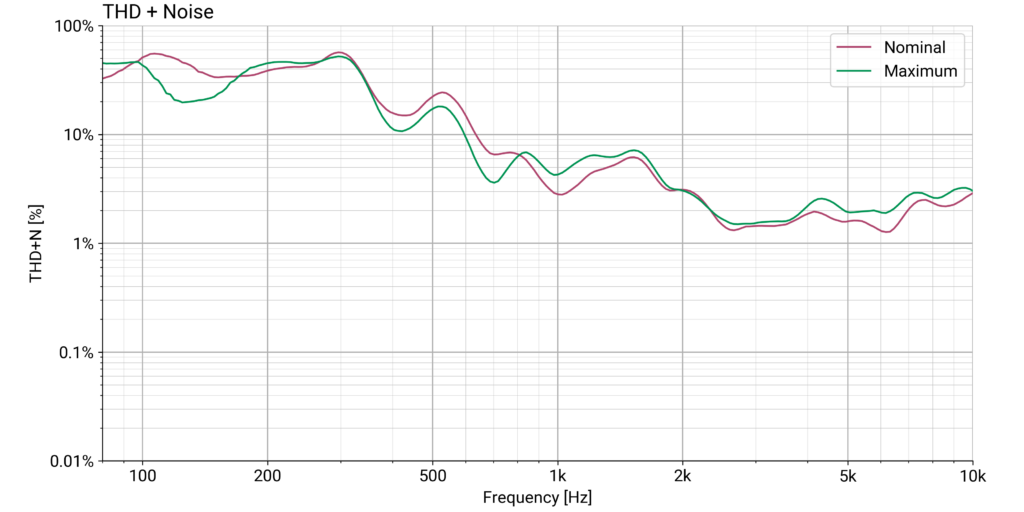

Measure the sound output’s total harmonic distortion and noise (THD) using music and white noise, pink noise, and other specially designed sound tracks.
Using updated Audio testing tracks that include white noise, pink noise, logarithmic swept sine (also known as a chirp), along with classical, electronic, hip hop, and other various music signals, DXOMARK Audio engineers have frequency response measurements and total harmonic distortion with noise (THD+N).


 Test results show the ratio of the root mean square (RMS) values for distortion and noise signal, as well as the RMS values for the entire signal. The smaller the harmonic distortion and the less noise a device’s speaker produces, the better. While a topic for discussion in the high-end and audiophile space, a distortion below 2 to 3% is generally perceived as not affecting the audio rendition.
Test results show the ratio of the root mean square (RMS) values for distortion and noise signal, as well as the RMS values for the entire signal. The smaller the harmonic distortion and the less noise a device’s speaker produces, the better. While a topic for discussion in the high-end and audiophile space, a distortion below 2 to 3% is generally perceived as not affecting the audio rendition.